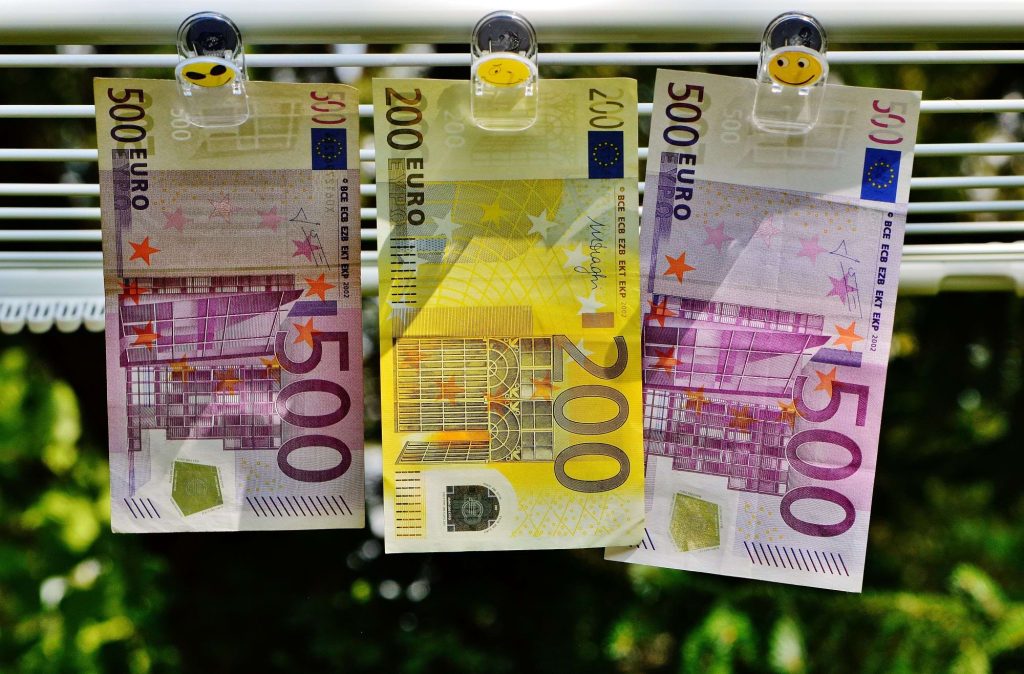Money laundering occurs when money is obtained through illegal activities, such as fraud, terrorist and fraudulent activities and cybercrime and the intent is to hide the source of the money and make it seem like they were obtained through legal means. Examples of money laundering have changed over the years. A lot of the time criminals work for businesses with a lot of revenue from various activities. This allows them to make a lot of money and hide their illegal activities and make them look like revenue-generating actions of the company.
Examples of money laundering
There are new examples of money laundering that appear every year as criminals become more creative. It can be a very expensive crime. In 2022, the AFP uncovered assets that were valued at around $10 million after conducting an investigation. On a global scale, it can reach the trillions.
Money laundering creates a domino effect. It increases crime rates as more people get involved either voluntarily or involuntarily. An employee might give in if they are in a difficult financial position after being approached by another employee. This can encourage other staff members to join which creates a toxic environment in the company. If individuals are caught laundering assets, then it is likely they will face fines and potentially prison time if the crime is severe.
But what does the crime look like? Some examples of money laundering include:
- Casino laundering
- Structuring
- Shell companies
- Cash laundering
Casino laundering
Among other examples of money laundering, casinos can be an easy way to hide money sources. Criminals use their illegal money to purchase chips from a casino. Gambling is optional in that instance but they will be able to claim their dirty money as winnings so no one would be able to question their source. They can simply claim that they won by betting, which is legal.
If they are transferring money from one country to another, then they may be able to ask the casino to transfer the money to another casino for them. The government or bank will not be able to see how the original chips were purchased or how many were bought.
Structuring
Structuring is also referred to as ‘’smurfing’’ when describing a more organised approach. This type of money laundering can occur in businesses as criminals break down a large amount of money into smaller parts. Then they start depositing the smaller amounts at different times to make them seem normal. This allows the individuals to evade tax and avoid the questions that follow a large cash transaction.
Banks will need to monitor and report whether a cash transaction has passed a certain limit, usually anything over $10,000. Financial institutions may be keener to report suspicious activity if their customer has not declared an income-generating legal activity or if their customer transfers money around frequently.
Shell companies
Shell companies are organisations that only exist on paper. In 2016, the data leak from Panama Papers revealed a lot about how shell companies are used. The business is not operating and it has no employees, it merely exists so criminals can launder money. An employee within a company may start transactions with a shell company, something that could also indicate corruption and ill intent.
The shell company can generate fake invoices to give to their customers, so Anti-Money Laundering (AML) systems struggle to detect that the transactions are suspicious. In the case of a well-organised crime, it is possible that a network of shell companies has been created so transactions are harder to trace and money can move around freely.
Cash laundering
Out of all examples of money laundering, cash smuggling can be one of the most popular ways for this crime to occur. A criminal might choose to record cash transactions for their business. By using their organisation as a front, they are able to make money illegally and contribute any assets they receive as revenue.
They might also choose to pay for a real estate property using cash or make other investments with untraced funds.
A more sophisticated tactic is to pay a professional, such as an accountant or lawyer for a service and then cancel the appointment before it takes place. The customer then asks for a refund and they receive their money back.
Companies need to ensure that specialists in their workplace do not participate in any of the examples of money laundering listed above. Even if they are merely cancelling a service if an investigation finds them to be part of the group it can affect the whole organisation.
The three stages of money laundering
The examples of money laundering have three stages. Those are:
- Placement
- Layering
- Integration
Placement
Placement involves moving the money away from its illegal sources and into legitimate financial settings. It is easier to detect money laundering during this stage as large sums of money are being transferred and suspicious transactions might appear out of nowhere. The launderers may move the money to offshore accounts and try to develop strategies to turn the ‘dirty’ money into ‘clean’ money.
Layering
Layering includes all the examples of money laundering. It is the attempt of criminals to cover the source of the assets and create legal trails so they cannot be traced. During this stage, the criminal can be caught and charged if evidence is provided. However, sophisticated tactics reduce the possibility of the launderers being found and allow them to continue generating cash with no consequences. Most laundering activities, in fact over 85%, go undetected.
Integration
In the last stage, the criminals take the money away from their schemes and into their personal accounts. They can now use them for any reason they see fit. If the money laundering attempts succeeded, then a legitimate source was created so the criminals will have an explanation if needed. The money appears as ‘clean’ and they can buy more assets and start a new cycle.

How to investigate money laundering
The examples of money laundering have different ways of being investigated but every investigation has some common elements.
Businesses need to assess what the risk of money laundering is for their organisation. Depending on the industry and type of operations of the business, some might be more likely to be victims than others. A risk assessment for customers can also be conducted to decide if the clients are high, medium or low risk.
An AML system can be useful in investigating money laundering as it can monitor data and analyse transactions. It can then send out alerts if suspicious activity has been detected. The AML system can be updated if it is found that criminals have bypassed it. However, an AML system must include, and be resourced for, proper investigations of any red flags – in 2020 Westpac was fined $1.3bn for failing to properly assess and report suspicious transactions.
It is not enough to detect suspicious transactions, you must investigate them, so you must also have a case management system in place, such as Polonious. Polonious can bring all red flags into one system and provide greater insight across a company’s whole dataset.
Investigators can also look at invoices and try to identify real companies from shell companies. The business address of every business as well as the type of operations should be researched to ensure that all invoices are legitimate. It is impossible to check every single invoice and every single contract so periodic checking can minimise the possibility of crime occurring.
Criminals count on investigators missing them or not detecting any unlawful transactions. When a business hires its employees, it trusts them to act ethically and comply with laws and regulations. An individual laundering money highlights that they do not only put their career at risk but the future of the company as well.
Investigating money transfers is another way to identify money laundering. Investigators can check large cash transactions and transfers and the financial institutions involved, to detect whether popular money laundering organisations are used for payments.
Government agencies may be called to investigate further.
Prevent money laundering
The company needs to check financial records frequently. There are more examples of money laundering that managers need to be aware of and know how to recognise the red flags when they see them.
Many AML alerts are ignored which means that the company will probably miss most of the money laundering signs. If not all, then leads that appear severe should be followed up and an investigation might need to be launched.
A risk-based framework such as ISO can be implemented along with strict protocols to establish a zero-tolerance policy against crime. Internal controls should be maintained and documents and data should be up to date and accurate to ensure that all operations are running smoothly and mistakes are quickly identified.
As mentioned before, customer due diligence can prevent money laundering as the risks of each customer are assessed. A profile is created for them that details their reason for contacting the company and what their identity is. The legitimacy of the client can then be verified.
Conclusion
Money laundering is a serious crime that can cost companies more than just money. It can affect their reputation, customer base and potential partnerships. There are many examples of money laundering and they evolve every year. Government-backed currencies are more likely to be laundered than digital currencies, however, digital currency-related crimes are increasing. An investigation should be launched if the managers suspect unlawful activity and steps should be taken to resolve any weaknesses quickly.
Let's Get Started
Interested in learning more about how Polonious can help?
Get a free consultation or demo with one of our experts
Eleftheria Papadopoulou
Eleftheria has completed a Bachelor's of Business with a major in Marketing at the University of Technology Sydney. As part of her undergraduate studies she also obtained a Diploma in Languages with a major in Japanese. Following her graduation she has been working as a Marketing Coordinator and Content and Social Media Specialist.
Eleftheria is currently finishing her Master in Digital Marketing.




